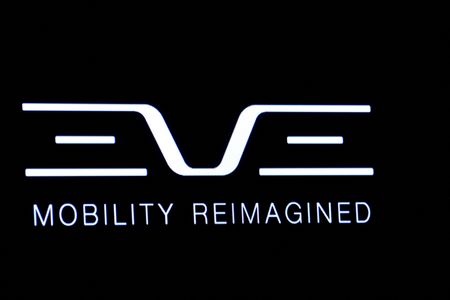By Gabriel Araujo
SAO PAULO (Reuters) – Power grids around the world are not yet ready for the so-called flying car, an executive with Brazilian start-up Eve Air Mobility told Reuters, adding that the electric aircraft maker is in talks with power providers to bridge the gap.
Eve’s Services & Operations Solutions Vice President, Luiz Mauad, said the nascent industry does face challenges when it comes to the power supply the electric aircraft needs to recharge. But he expressed optimism they would be overcome in time for Eve to meet its target of starting commercial operations in 2026.
Eve is one of a bevy of startups worldwide developing battery-powered aircraft that can take off and land vertically to ferry travelers to airports or for short city trips, allowing them to beat traffic.
Mauad said Eve has been talking to global power generators and distributors about making infrastructure adequate for the electric vertical take-off and landing aircraft (eVTOLs), including the so-called vertiports they would take off from.
Controlled by planemaker Embraer, Eve has an order backlog of up to 2,850 aircraft, with clients in countries including Brazil, the United States, India and France.
“We see that major cities are more prepared and companies say they have grid studies for those cities, where demand is greater,” Mauad said. “But there is still the ‘final mile’ challenge so that power can get to the vertiports.”
He added Eve was keen to partner with power firms to develop the necessary infrastructure, and said in Brazil the company has been discussing projects with EDP.
“Once our clients decide on their specific routes, the power firms will be able to establish if a given place is OK or if it will require more time,” Mauad said.
Eve’s eVTOL is being developed to have a range of 100 km (60 miles). The average traveled distance is likely to be around 30 km, the company estimates.
Discussions are also advancing on establishing vertiports, Mauad said, noting that studies show they can be as small as a helipad or as large as a hub, with several stands and passenger terminals, depending on demand and available area.
“It is a sector in which we learn as we go.”
(Reporting by Gabriel Araujo, Editing by Rosalba O’Brien)





